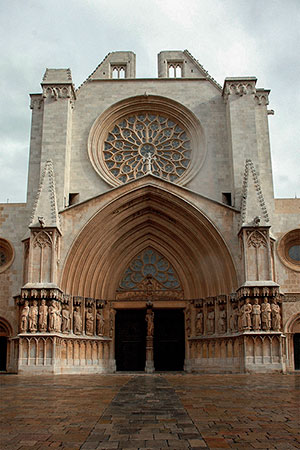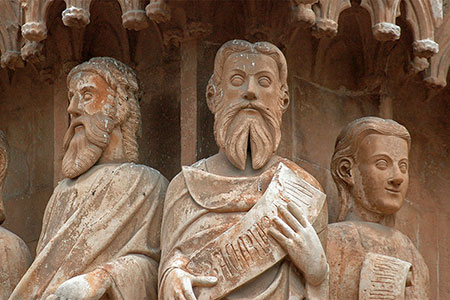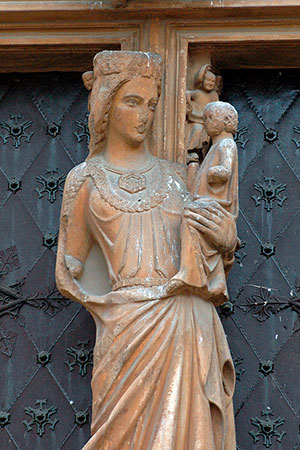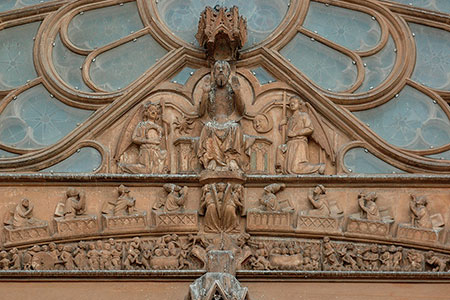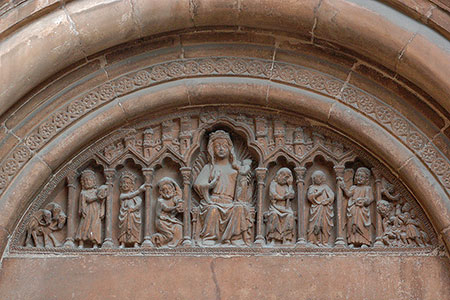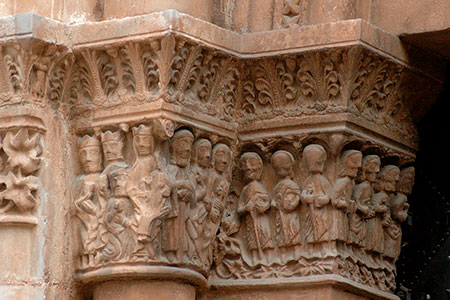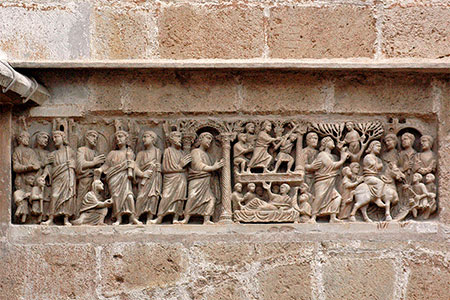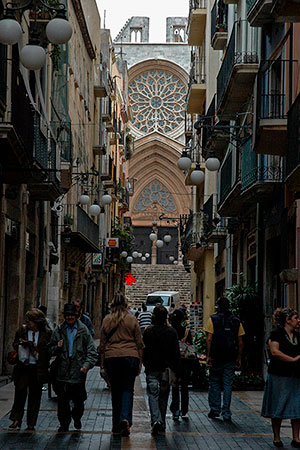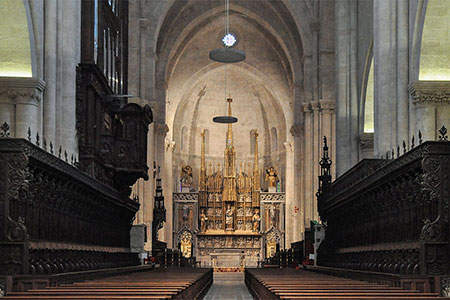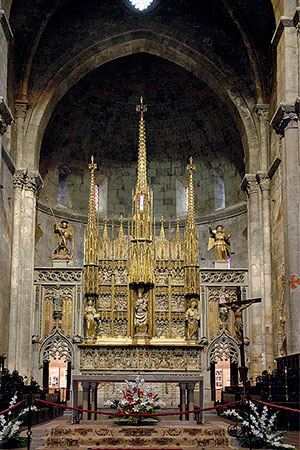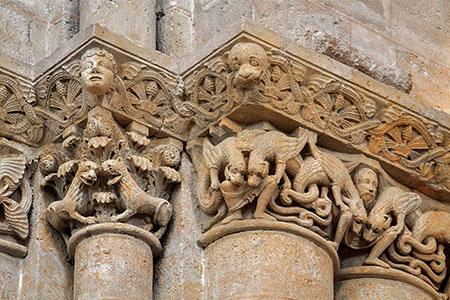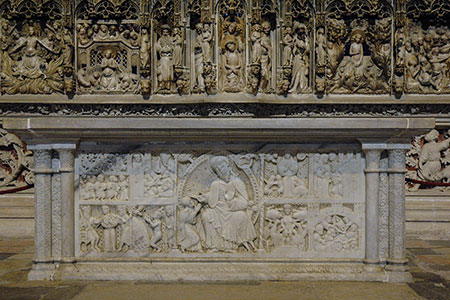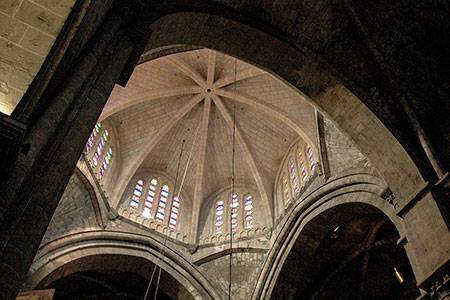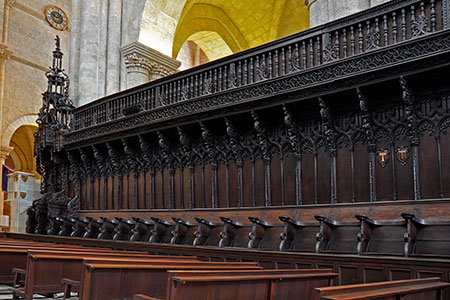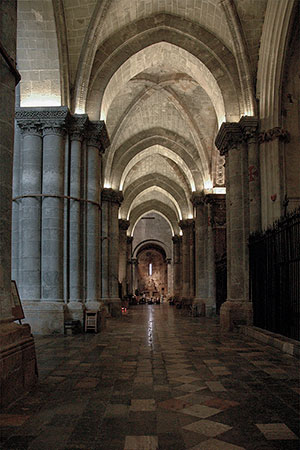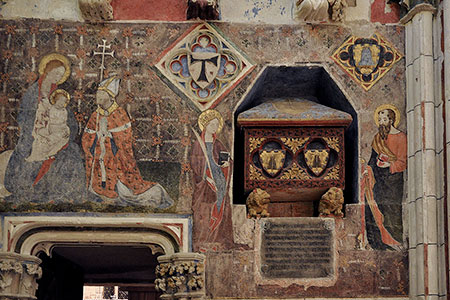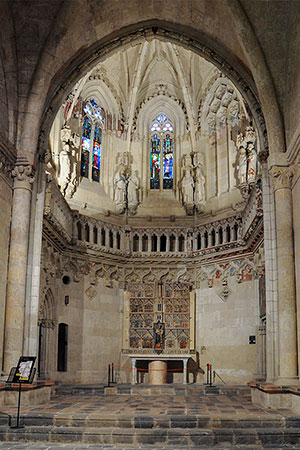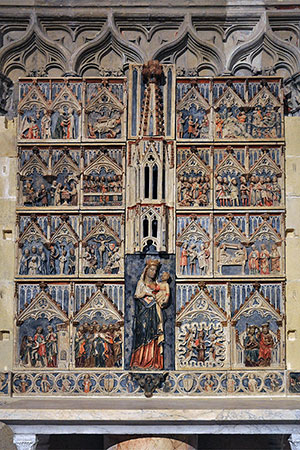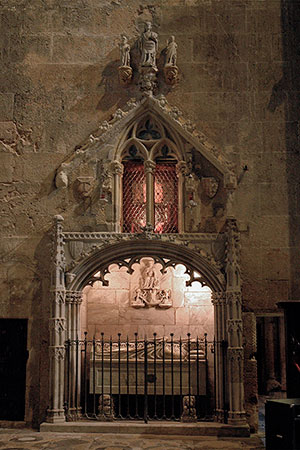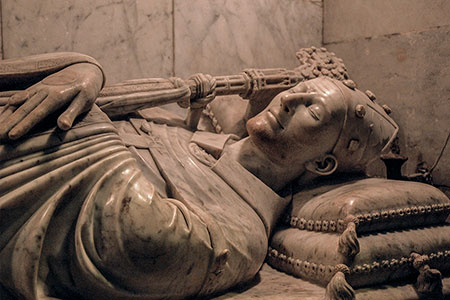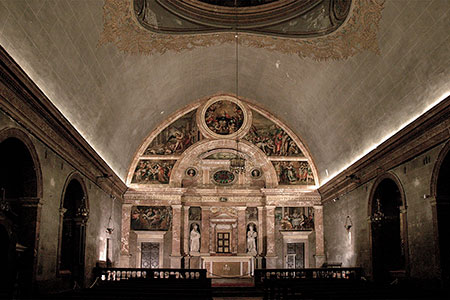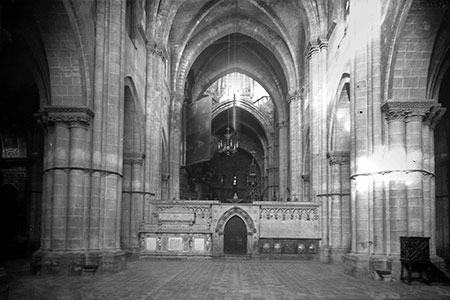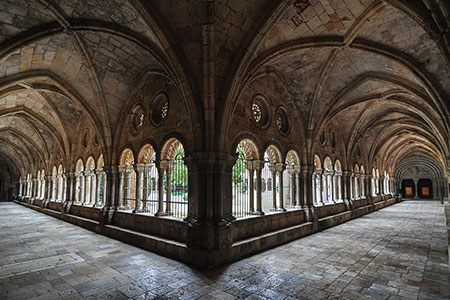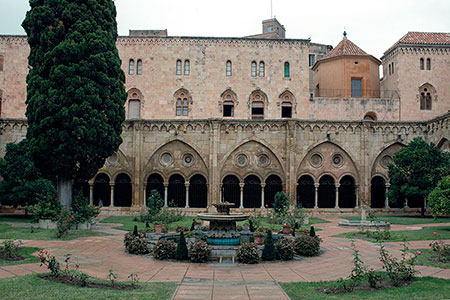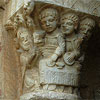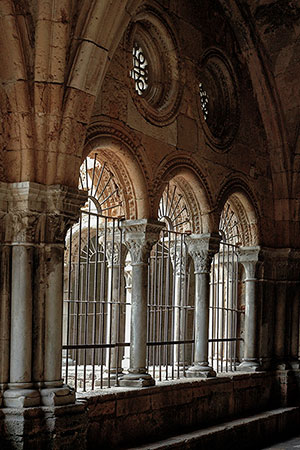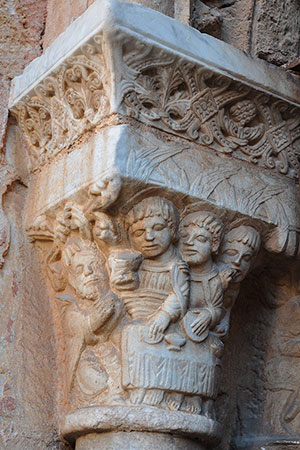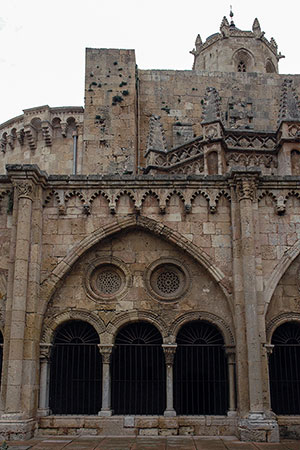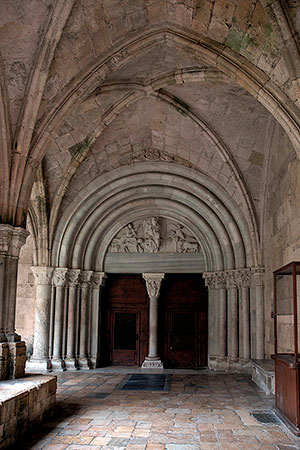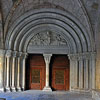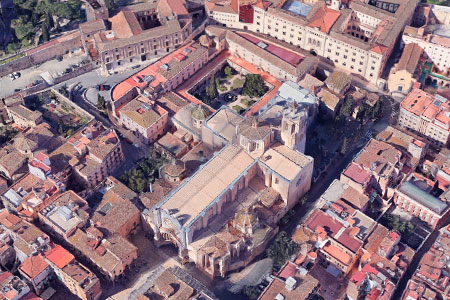Canonry of the Cathedral of Tarragona
Cathedral of Santa Tecla / Santa Maria de Tarragona
(Tarragona, Tarragonès)
The archbishopric of Tarragona has a very ancient origin; there are reports from the 3rd century with the archbishop Fructuosus. An initial cathedral dedicated to Saint Thecla was built in some unknown location, but around the 6th century, a space located in the old Roman-era religious enclosure that had fallen into disuse was adapted to establish the Visigoth cathedral and its dependencies.
After the Muslim invasion, in 1118, Tarragona was handed over by Count Ramon Berenguer III to Bishop Oleguer (Olegarius) of Barcelona. The archbishopric was then occupied by the abbot of Cuixà and from 1139 by an archbishop already based in the city, Gregori (1139-1146). A community of canons was already in the cathedral following the Aachen rule, at least from the 11th century, but perhaps its presence was not continuous. In 1154, under Archbishop Bernat Tort, the community was reformed, and the rule of Saint Augustine was adopted. In 1170, Alfonso I donated the castle of Escornalbou (Baix Camp) to Juan de Santboi, a canon of Tarragona, chosen by Archbishop Hug de Cervelló. A relationship was established between the mitre and the Escornalbou canonry.
In 1171 the cathedral, was under construction, as were the canonical dependencies, such as the refectory (now the chapel of the Santíssim Sagrament). The canonical community was secularised in 1530, abandoning community life. The cathedral church now dedicated to Santa Maria, a building with three naves and a transept, built from the 12th century onwards and with important sculptural decoration, has been preserved. It still conserves a large and valuable collection of religious furnishings.
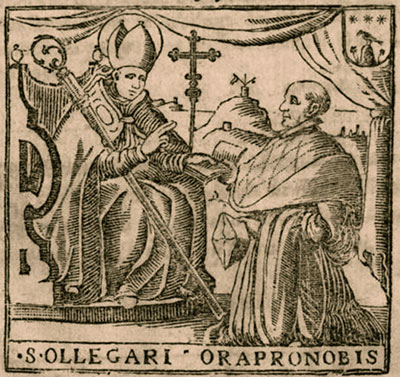
Illustration of Historia de S. Oleguer
arçobispo de Tarragona y obispo de Barcelona
Oleguer, bishop of Barcelona from 1116 to 1137, is believed to have been born around 1060 and was the son of a high official of Ramon Berenguer I. He received a thorough education and, in 1076, joined the chapter of canons at the cathedral. In 1089, he was ordained as a deacon. Bishop Bertran ordained him as a priest, and by 1093, he was already a member of the community of canons of Saint Ruf, which the same bishop had founded in Sant Adrià. The following year, Olegarius became the prior of Sant Adrià, a position he left to become a member of the canonry of Saint Ruf in Avignon, where he took on the role of abbot.
In 1115, he accompanied Douce of Provence to Barcelona for her marriage to Ramon Berenguer III. At that time, Oleguer was acclaimed as bishop of Barcelona, a position he initially refused. After papal intervention, he accepted and also assumed the role of restorer of the archbishopric of Tarragona (1119), a role he held without relinquishing his position as bishop of Barcelona. He remained highly active, participating in councils, political matters of the time, and traveling to the Holy Land. He died in 1137 and is venerated as a saint by the Church. His tomb is located in the cathedral of Barcelona.
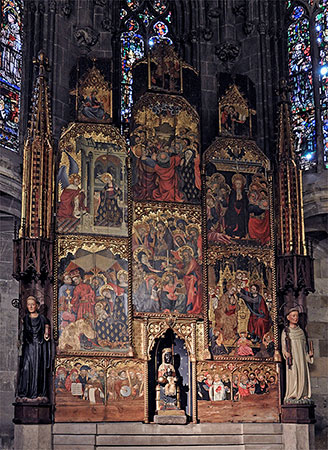
Fragments of the Santes Creus altarpiece
In a side chapel of the cathedral
Museu Diocesà de Tarragona
- BESERAN I RAMON, Pere (2007). Aloi de Montbrai. L'art gòtic a Catalunya. Escultura I. La configuració de l’estil. Barcelona: Enciclopèdia Catalana
- BOTO, Gerardo (2015). Metaphora, mirar la materia para ver lo etéreo. La puerta claustral de la catedral de Tarragona. Románico, núm. 20
- BRACONS CLAPÉS, Josep (2002). La façana de la catedral de Tarragona. L’art gòtic a Catalunya. Arquitectura I. Catedrals, monestirs i altres edificis religiosos. Barcelona: Enciclopèdia Catalana
- CAMPS, Jordi (1988). El claustre de la catedral de Tarragona: Escultura de l'ala meridional. Barcelona: I. E. Catalans
- FUENTES, Manuel Maria; RAMOS, Maria-Lluïsa;MENCHÓN; GORT, Ezequiel; PLADEVALL, Antoni (1995). Santa Maria de Tarragona. Catalunya romànica. Vol. XXI. El Tarragonès... Barcelona: Enciclopèdia Catalana
- GARCíA DE CARALPS, Antonio Juan (1617). Historia de S. Oleguer arçobispo de Tarragona y obispo de Barcelona. Barcelona: S. Matevad
- LIAÑO MARTÍNEZ, Emma (2002). La catedral de Tarragona. L’art gòtic a Catalunya. Arquitectura I. Catedrals, monestirs i altres edificis religiosos. Barcelona: Enciclopèdia Catalana
- LIAÑO MARTÍNEZ, Emma (2009). La época del Císter y de las nuevas catedrales en la Corona de Aragón. Arte de épocas inciertas. De la Edad Media a la Edad Contemporánea
- LOZANO LÓPEZ, Esther; SERRANO COLL, Marta (2010). Els capitells historiats del claustre de la catedral de Tarragona. Tarragona: Arola Editors
- MACIAS, Josep M.; i altres (2012). Praesidium, templum et ecclesia. Les intervencions arqueològiques a la catedral de Tarragona. Associació Cultural Sant Fructuós
- MACIAS, Josep M.; MENCHON, Joan J.; i altres (2007). L'Arqueologia de la Catedral de Tarragona. La memòria de les pedres. La catedral de Tarragona. In Sede, l0 anys del pla director de restauració. Tarragona: Arola Editors
- MANOTE, Maria Rosa (2007). Pere Joan. L'art gòtic a Catalunya. Escultura II. De la plenitud a les darreres influències foranes. Barcelona: Enciclopèdia Catalana
- MENCHÓN, Joan Josep (2015). La ciutat de Tarragona entre l'antiguitat tardana i els segles XII-XIII. La recuperació d'un espai urbà. V Congrés d'arqueologia medieval i moderna de Catalunya. Ajuntament de Tarragona
- MORERA, Emili (1904). Memoria o descripción histórico artística de la Santa Iglesia Catedral de Tarragona desde su fundación hasta nuestros días. Tarragona: Arís e Hijo
- MORERA, Emilio (1894). Tarragona antigua y moderna: Descripción histórico-arqueológica de todos sus monumentos y edificios públicos. Tarragona: Arís e Hijo
- RAMON, Salvador; FARRÉ, Joan (2008). El retaule de l'altar major. Catedral de Tarragona. Enginyers Industrials de Tarragona
- VICENS, Francesc (1970). Catedral de Tarragona. Barcelona: Ed. Polígrafa
- Enllaç ↗ : Catedral de Tarragona



